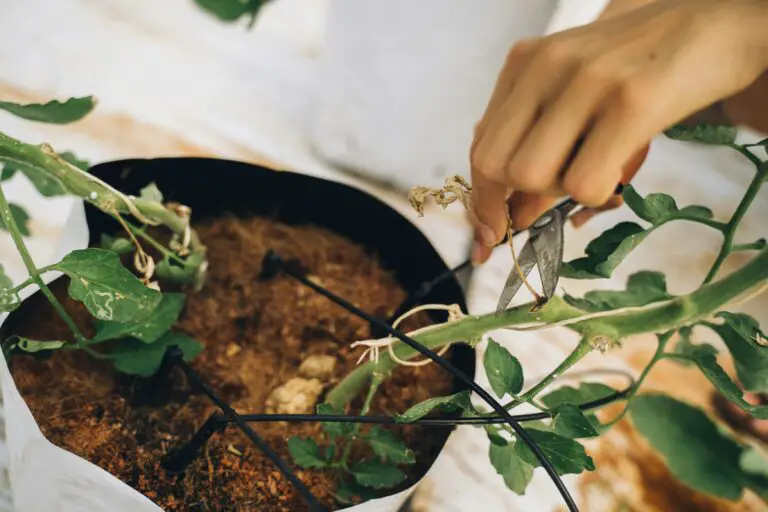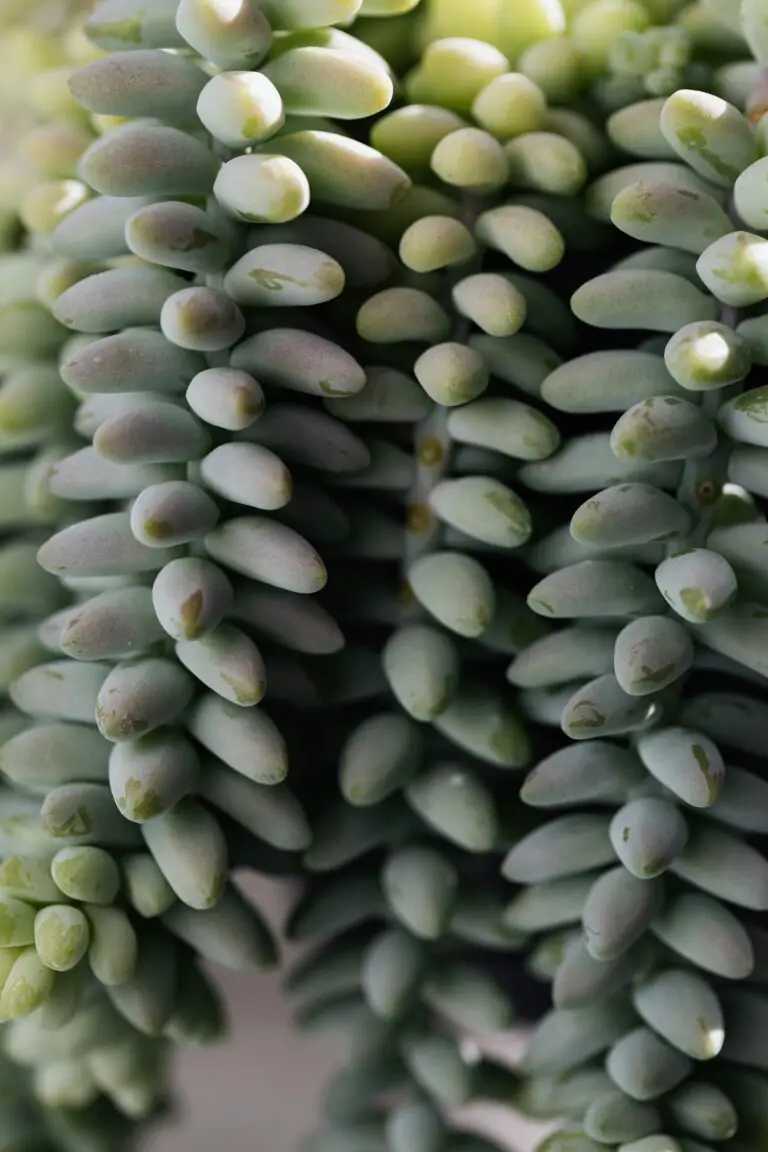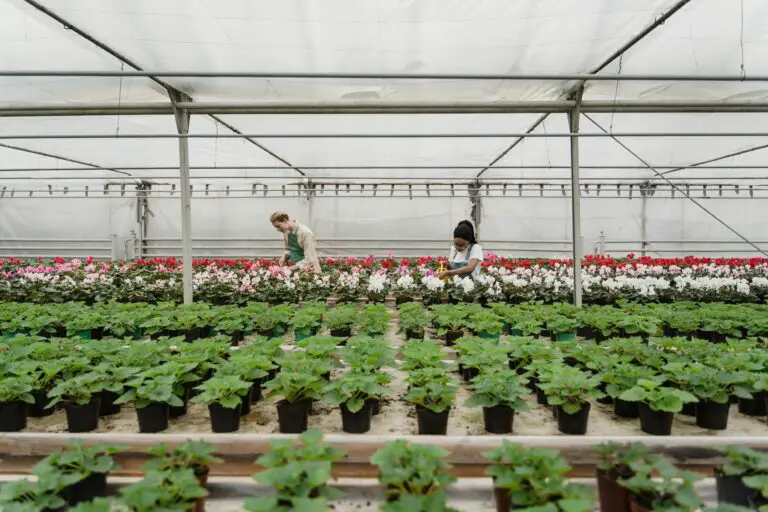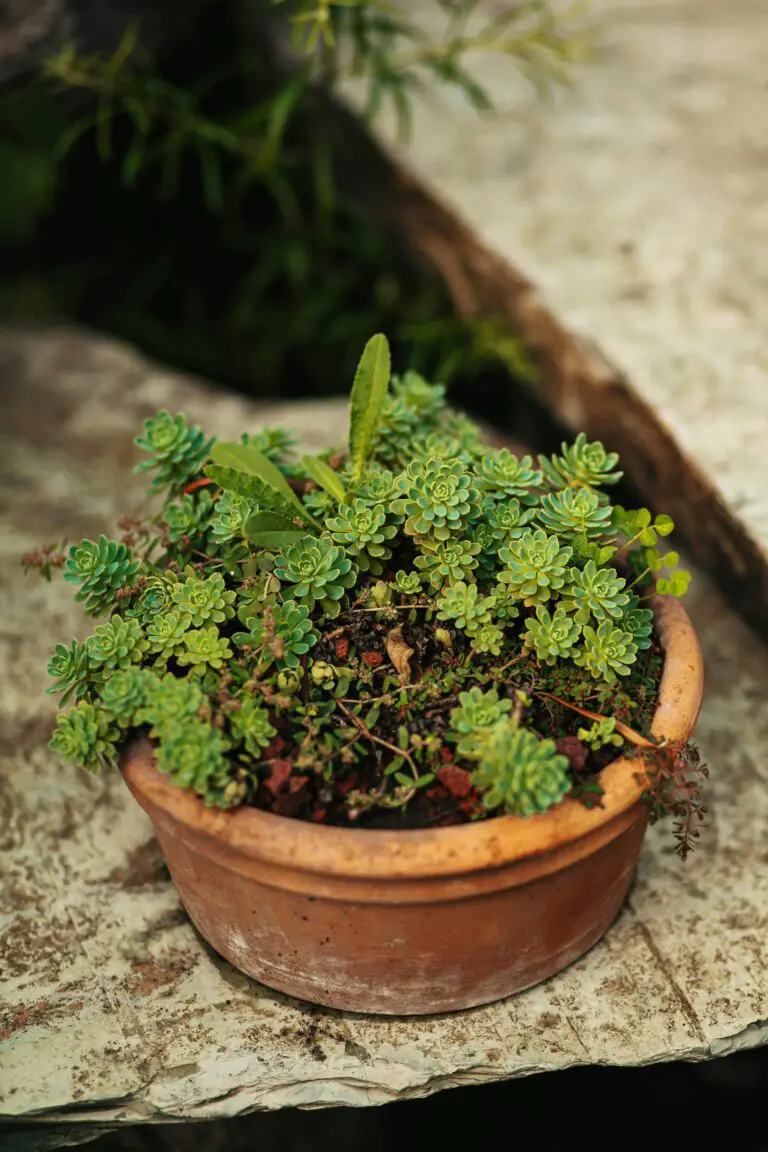Introduction to Sedum Pruning
Ever wondered if your sedum plants need a little haircut? You’re not alone! Sedum, a genus of over 400 species commonly known as stonecrop, encompasses an incredibly diverse array of succulents. Some are sprawling ground covers, while others stand tall, defying gravity with clusters of star-shaped flowers. Each variety, with its unique needs and characteristics, shares a common thread—the potential benefits of pruning.
Pruning isn’t just about keeping your plants looking tidy; it’s a critical part of maintaining plant health and vigor. Strategic snips can prevent overgrowth, encourage bushier habits, promote airflow to ward off disease, and sometimes even spur a second bloom. Additionally, it elevates the visual appeal of your garden, shaping sedum into living sculptures that capture the eye. Consider this: Mastering Plant Care: Expert Tips for Pruning offers a wealth of insights into how a well-timed prune is like a wellness retreat for your plants.
Some gardeners swear by a stringent pruning regime, while others take a more laissez-faire approach. But where do you stand when it comes to pruning your sedum? Let’s delve into the various perspectives and practices that can help you make informed decisions for your succulent companions.

Remember, pruning isn’t just a chore—it’s an opportunity to connect with your garden and understand the unique rhythms and needs of your plants. After all, each cut is a conversation between you and your sedum, an exchange that, when done thoughtfully, leads to a happier, healthier garden.
Understanding Sedum and Its Growth
Let’s dive right into the heart of the matter: Sedum, a darling of the succulent world, struts its stuff in gardens by flaunting a variety of shapes and sizes. Whether it’s the tall, stately varieties that command your attention or the carpet-like creepers that seduce your gaze to ground level, sedum plays a vital role in any eco-smart garden layout. But here’s a riddle for the green-thumbed reader: To prune or not to prune? That is the garden’s question!

If you’ve witnessed a sedum during its glory days, you know they have a unique way of crowning themselves king of the season. With stems reaching skyward and blossoms that seem to spark joy in every pollinator within buzzing distance, sedum has a natural, untamed beauty. But don’t be fooled by their wild grace; these plants have a growth pattern that’s worth examining closely, especially when the shears are itching to make a cameo in your gardening narrative.
Imagine a sedum, thriving in your garden’s nook, soaking in the sun’s kiss. It fans out its foliage like a peacock displaying its feathers, beckoning the eyes of every passerby. Now, if that imagery got you picturing a jungle overgrowth, let’s reconsider. A deep understanding of sedum’s growth habits reveals that they benefit from skillful snips—shaping them delicately while empowering their essence to fill the garden stage without blocking the ensemble cast.
The art of pruning sedum isn’t solely for curb appeal. It’s a strategic move to enthuse vigor in these resilient beauts. By maintaining a focus on their growth cycles, a savvy gardener interprets the ebbs and flows of their natural shape. Truly, pruning becomes a conversation with the plant: a gentle tit-for-tat that dictates the rhythm of their robust presence in your personal slice of Eden.
So, as a hands-on guide, keep in mind the pulse of your sedum’s life. When the bright greens of spring burgeon with possibility, it might be time to gently guide their journey. And when the leaves turn the warm shades of fall, consider this your cue to prepare them for a winter’s rest, ensuring a reemergence with even greater splendor. Now, isn’t that a gardening plot twist you’d like to cultivate?
Benefits of Pruning Sedum
Think of your favorite chef dexterously slicing and dicing ingredients into a masterpiece—that’s you with your sedum plants, but instead of a gourmet dish, you’re crafting a garden showpiece. Pruning might seem like a mundane task, but it’s where artistry meets horticulture to benefit your beloved sedums in ways that will make you want to give them a standing ovation. Let’s peel back the layers on why a little snip here and there can lead to your scrappiest sedums standing tall and proud.
First off, when done thoughtfully, trimming bestows a bevy of boons upon your sedum. Improved air circulation earns top billing—think of it as giving your plants room to breathe, which, in the world of plants, can be the difference between flourishing and floundering. And let’s not forget about their solar needs; with the right pruning techniques, each sedum leaf turns into its own mini sunbathing sprawl, soaking up the rays for maximal photosynthetic splendor.
Now, consider disease—it’s like the plot twist in a thriller that no one wants. Your sedum could be telling a heartwarming tale of growth and brilliance, only for disease to sneak up like a nefarious character. But here’s where your careful clipping becomes the hero, evicting any such unwanted storylines by cutting away the makings of a potential outbreak. Like a skilled guardian, you ensure the narrative stays wholesome and uplifting.
Last but never least, is the sequel that every gardener anticipates—next year’s growth. A strategic prune sets the stage for this, cueing up your sedum for a return that’s even more vibrant than the previous season. Because in the end, isn’t that what we’re all after? A garden where each chapter is more compelling than the last, with plants that don’t just survive the cut but stand as testament to your nurturing narrative.
If you’re looking for a visual guide to perfect your pruning performance, take a peek at this handy video:
And remember, while we’re chatting about maintenance, it’s not just the sedum that might keep you busy. Ensuring a robust garden requires an array of canny decisions and precise actions; from selecting the right companions for your succulents to understanding the seasonal nuances that govern their care, every detail contributes to the health and beauty of your green sanctuary.
When Is the Right Time to Prune Sedum?
Pinpointing the perfect moment to give your sedum that much-needed trim can be as artful as it is scientific. Take it from the seasoned green thumbs: timing is everything. Spring or autumn, you wonder? Well, the answer isn’t one-size-fits-all—sedum species come with their own calendars.

As winter fades and new growth peeks through the soil, spring ushers in a time of renewal. This season can be ideal for pruning some types of sedum, shedding the old to make way for vigorous new stalks. Yet for certain sedum varieties, autumn’s cooler embrace is their cue to be pruned, allowing the plants to conserve energy and resources in preparation for the colder months.
Imagine a crisp fall day in your garden; leaves rustling, a cider in hand, and the satisfying snip of dead-heading your Autumn Joy sedum. Or envision the vibrant awakening of your Stonecrop in spring, each trim heralding a rush of fresh green vitality. Every species, from the ground-hugging Dragon’s Blood to the upright Matrona, dances to its unique seasonal rhythm.
Whether you’re a budding gardener or an adept cultivator, understanding these nuances can propel your garden to thriving splendor. For specific guides and tricks, drop by our beginner’s guide to thriving succulents to cultivate your expertise even further. Choose the right timeframe for your sedum, and watch your garden flourish under your attentive care.
How to Prune Sedum: Tools and Techniques
Welcome to the green-fingered world where pruning isn’t just about snipping away—it’s an art form that rewards with lusher, livelier gardens. Take sedum, for example, this hardy perennial thrives with a bit of careful trimming, but should sedum be pruned? Absolutely, and knowing exactly how to do so can make a world of difference.
First things first, let’s talk tools. You wouldn’t butter toast with a spoon, and you shouldn’t prune sedum with the wrong equipment. Get yourself a pair of sharp, clean pruning shears. If you’re dealing with thicker stems, a pair of loppers might be your best friend. The key is to make clean, smooth cuts that help prevent disease from entering the plant. Oh, and always, always clean your tools before you start—sedum appreciates good hygiene just as much as we do!
Now, imagine this: you’re standing before your sedum. It has bloomed magnificently this season, and you are armed with your trusty shears, ready for battle against the overgrown and the deadheaded. You lean in and—snip! With the precision of a seasoned gardener, you target the dead or overgrown stems. This isn’t just about making the plant look good; it’s a strategic move to promote growth for seasons to come.
If you’re a newbie to the pruning party, fear not. Envision giving your sedum a haircut, shaping it just as a stylist would. You’re sculpting for sunlight to reach the lower foliage and for air to better circulate, which reduces the chances of pest infestations and fungal diseases—a win-win situation.
A critical piece to remember is timing. The best time to prune sedum? Late winter or early spring, just before new growth starts. This timing helps the plant to heal quickly and jump right into the growing season. And if you need some inspiration, there’s no better way to learn than by watching a pro in action.
Let’s take a pause and see pruning in motion with this helpful video, “How To Prune Your Sedum Plant In Rainy Season.” Just click play, absorb the pruning prowess on display, and you’ll be snipping away with confidence in no time.
And remember, always prune with purpose. You’re not just cutting away the old; you’re setting the stage for new growth and vitality. With the right tools in hand and a clear understanding of the technique, your sedum won’t just live; it will thrive!
Caring for Your Sedum Post-Pruning
After you’ve given your beloved sedum plants a neat trim, you may wonder, “What’s next?” Well, the journey to lush, vibrant sedums doesn’t end with pruning; it’s merely a checkpoint. Let’s chat about what you should do to ensure your pruned sedum stays as perky as a freshly brewed morning espresso.
Watering: Quench Thirst, But Don’t Drown
Immediately after pruning, your sedum may be in shock, even if it doesn’t show it; plants are stoic like that. So, what’s the best way to offer comfort? Water—but with a caveat. Sedums are much like that friend who enjoys a drink but knows their limits. Give your pruned sedum a moderate drink to help it recover, being careful not to waterlog it. Too much water, and you’ll be setting the stage for root rot, and nobody wants an encore performance of that tragedy.
Fertilizing: A Spoonful of Nutrients
As your sedum heals and focuses on regrowth, it’s craving nutrients, almost like how we crave a snack after some hard work. A gentle application of a balanced, slow-release fertilizer will do wonders. Think of it as giving your sedum a multivitamin boost to help it bounce back with vigor.
Need more sedum care tips? Our in-depth guide delves into best practices that will ensure your garden remains the envy of the neighborhood.
Mulching: The Comfort Blanket
Don’t underestimate the power of mulching. It’s like tucking your sedum in with a cozy blanket, which does more than just keeping it warm. Mulch conserves moisture, suppresses weeds, and adds aesthetic appeal to your beds. Organic mulches can even break down over time, contributing additional organic matter and nutrients to your soil—quite the bonus!
Autumn leaves, straw, or pine needles make fantastic mulch choices for your sedum, ensuring it feels snug and cared for.
Now, to give you a visual on post-pruning care, have a look at this enlightening video:
Remember, post-pruning care is essential to maintain the health and beauty of your sedum. Keep a watchful eye on your plants for signs of distress or disease, and don’t hesitate to give them a little extra TLC if needed. Happy gardening!
Common Mistakes to Avoid While Pruning Sedum
When it comes to maintaining the perky posture of your sedum, pruning is like a well-intended haircut – it can either make or break the look! But here’s the rub: a few missteps, and you might just find yourself with a plant that’s more frazzle than dazzle. To keep your sedum serenely stunning, steer clear of these blunders:
Oops #1: Over-pruning, a.k.a. “The Zealous Snip”
Imagine you’re a sculptor, and your sedum is the marble. It’s easy to get snip-happy, paring down more than necessary in pursuit of perfect form. But halt those shears! Your sedum needs its foliage for photosynthesis and energy, so take a less-is-more approach. Remember, you can’t glue leaves back on!
Oops #2: Timing Trouble – The Calendar Conundrum
Grabbing your pruning tools at the wrong time of year is like delivering an Oscar-winning performance to an empty theater – wrong timing can squander all your efforts. Sedum is resilient, but trimming at the onset of cold weather or the peak of the growing season can stress the plant. Spring and late summer are your go-to periods for wielding those clippers!
Oops #3: Dull Tools – The Crushing Blow
Using blunt tools on your sedum is akin to trimming your own hair with kitchen scissors – it’s a recipe for disaster. A sharp snip ensures clean cuts that heal efficiently, while dull blades can crush stems, making the plant vulnerable to diseases. Keeping your tools sharp is keeping your sedum safe – simple as that.
Oops #4: Poor Technique – The Clumsy Cut
Each stem of your sedum should be treated with the precision of a master chef. Your cuts should be angled and just above new buds to encourage proper growth. Unsure of your technique? Picture this: a seasoned gardener, wrists flicking with finesse, removing only the bits that impede the sedum’s zenith. That could be you – practice makes perfect!
Now, to really drive the point home, let’s go visual. Check out this video that captures the essence of proper pruning without the common catastrophes:
As you’ve seen, successful sedum pruning isn’t rocket science, but it does require a dollop of know-how and a sprinkle of restraint. Avoid these common mishaps and watch your garden’s star quality soar!
Frequently Asked Questions
Curiosity is the gardener’s best tool when it comes to nurturing plants. Let’s dig into the root of your questions about sedum pruning!
When is the best time to prune sedum?
If you’re eyeing those sedum plants in your garden, you may wonder when to reach for the shears. The perfect timing for pruning sedums is just before they enter their active growing season in the spring or immediately after blooming. It’s like catching them at their stretch in the morning, ready for a growth spurt!
Will pruning my sedum encourage better growth?
Absolutely! A well-timed trim can help your sedum flourish, much like a great haircut can make us feel fresh. Pruning in spring can result in a more compact, sturdy plant. It’s like training them for the plant Olympics – stronger, better, faster!
Can pruning sedum help with pest control?
Yes, it’s a bit like pest management and all-natural at that. Removing dead or damaged parts of the plant helps prevent opportunistic pests from moving in. Think of it as tidying up to keep the bugs from bunking in your sedum’s branches.
How do I prune sedum without harming the plant?
Pruning sedum is like sculpture; it requires finesse and the right tools. Use clean, sharp scissors or pruners and make cuts above a leaf node or branching point. Imagine giving the sedum a new hairstyle, one that will grow back even more vibrant!
Is it possible to over-prune my sedum?
Indeed, it’s a real concern – moderation is key! Over-pruning can stress the plant and lead to fewer blooms or even damage. Envision yourself as a plant stylist: you want to enhance its natural shape, not leave it bare!

What should I do with the pruned offshoots?
Don’t throw them out! Those pruned pieces can become new plants. Propagate them by placing the cuttings in soil, and with a bit of water and sunlight, voila – new sedum friends! It’s gardening magic at its finest.
Will pruning affect the flowering of my sedum?
If you’ve got dreams of a sedum full of blossoms, pruning can actually help. It can promote more blooms by redirecting the plant’s energy to flower production. It’s like your sedum putting all its effort into dressing up for the summer ball!
Any final tips on sedum pruning?
Just remember, sedums are resilient. Approach pruning with a plan, and your sedum will thank you with robust growth and vibrant flowers. Happy snipping!



